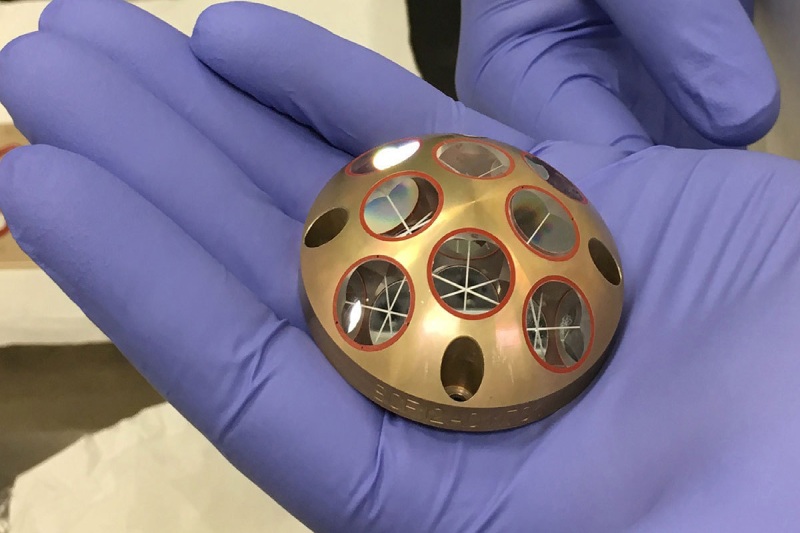How NASA’s Small Reflectors can be used to Find Landers on the Moon

NASA has created a straightforward yet powerful technique known as Laser Retroreflective Arrays (LRAs) to precisely locate lunar landers.
These affordable, compact, and lightweight devices reflect laser light back to the source from any direction. As part of NASA’s Commercial Lunar Payload Service (CLPS) plan, which intends to transport research and commercial payloads to the Moon, they will be connected to the majority of landers from US firms.
These are also some of the six essential instruments that will shortly be carried to the Moon by the Intuitive Machines Nova-C lunar lander.
According to Dr. Daniel Cremons, deputy lead investigator for the LRA project at NASA’s Goddard Space Flight Center in Maryland, LRAs function similarly to the reflective strips on traffic signals that make them easier for drivers to see at night. He explained, “You can come in at a wide variety of angles and the light will head directly back to the source, unlike a mirror where it has to be pointed exactly back at you.”
By illuminating one spacecraft’s retroreflectors with a laser beam and timing the return of the light, scientists may determine the distance between them.
This method, known as laser ranging, has been used for many years to measure the separation between satellites and ground-based lasers, according to Dr. Xiaoli Sun, the LRA project’s chief investigator and another member of NASA Goddard. Subsequently, twenty years ago, an idea was conceived by someone to place them on landers. Then, from orbit, you can locate those landers and determine their location on the ground,” he stated.
For Lunar Exploration, why are LRAs Important?
Navigation and science depend on knowing where landers are on the surface of another planet. In order to build a navigation system akin to the global positioning system (GPS) used on Earth, LRAs function as markers in conjunction with orbiting satellites.
According to Cremons, docking spacecraft—like the supply spacecraft that supplies the International Space Station—benefits greatly from laser ranging. When exposed to laser light, the LRAs glow, which aids in guiding accurate docking. Additionally, lidars on spacecraft can detect them from a great distance in order to assess their speed and distance with extreme precision without the need for sunlight, allowing docking to occur at night.
Even in the absence of outside light, spacecraft may be able to land safely on a landing pad thanks to the reflectors. This implies that LRAs may one day assist spacecraft in landing in the shadowy regions close to the lunar South Pole, which are highly desirable for human missions due to the possible resources (such as water ice) that may be found there.
Because LRAs are lightweight and composed of basic materials, they can be included to scientific missions as a useful but low-risk addition. It’s totally passive on its own, according to Cremons. “LRAs are going to be useful on the surface for many years to come, even in the harsh lunar environment. In addition to navigating and locating your landers, laser ranging can be used to determine the location of your orbiter on the Moon.
How will Lunar Science be Enhanced by LRAs?
The capacity to precisely find more landers, rovers, and orbiters on the Moon equipped with one or more LRAs will only increase. Larger and better science will be possible thanks to this expanding network of reflectors, which will make it possible to measure the precise location of important landers and other areas of interest.
The only NASA spacecraft orbiting the Moon with laser range capability is the Lunar Reconnaissance Orbiter (LRO). LRO will keep contacting LRAs on upcoming landers, having already been successful in doing so with the Indian Space Research Organization’s Vikram lander.